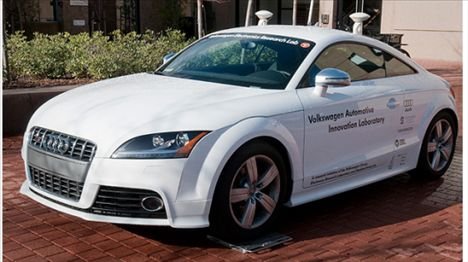I remember our game evolving to include miniatures, but that's as far as it ever went. With the advent of computer fantasy games, most of the fun went out of D&D, but the games were mostly stale, canned experiences without the spontaneity of playing with a group of six real live (arguably) people around a table, each one making his or her plans for what they wanted to do, and each completely foiled by the DM.
Well, this may just be the thing that brings the computer gamer and the D&D player together, just like the chocolate and peanut butter of a Reese's Cup. I'll be honest with you here, I only watched the video, but that made me so excited that I wanted to share it with all of you. I understand it's still a demo, but still, it just looks too cool! Watch the video, and read the review from Wolfgang Baur.
SurfaceScapes 2.0 demo: "
Wolfgang Baur, former editor of the immortal D&D magazine DRAGON and current publisher of a new, independent D&D magazine Kobold Quarterly had a chance to play around with the second edition of MS Surface-based SurfaceScapes D&D game. There are a lot of cool developments, like being able to load your character sheet onto a smartphone and have it continually updated as you take wounds. Here are Wolfgang's impressions:
- Movement and line of sight work great. In fact, a clever DM can distract the players, then move an orc from one patch of cover to another, where he again becomes invisible -- right until the moment a PC gets line of sight on it.
- It's still a demo. They've got a TON of work to do to integrate more powers, but the newest build for PAX East covers up to 5th level PCs, plus area attacks. Lots of basics still aren't implemented, like say a charge or anything outside the 1st PHB half-Heroic tier.
- The sound effects. Subtle, but powerful. Each attack comes with a sound. Dropping a dragon figure on the surface generates a roar and cloud of smoke. I could get used to this. What does a beholder sound like, I wonder?
- The Infinite Map. Being able to scroll the map under the figures is nice; it makes the table infinitely large. Not news for Fantasy Grounds players, but obviously useful. When the map scrolls, colored lines connect your figures to their new positions to make them easy to shift.
- Figures and Screens Together. The combination of real and virtual PCs and NPCs worked much better than I expected. There's been some hard work done on the interface design which takes me to .....
- At Your Fingertips. Overall, the interface is intuitive and easy to learn. You can pull up your PC's powers on the table. Frankly there's no reason this couldn't be integrated with the DDI if that's the direction the team wanted to go.
- 4E-Only. I asked about Pathfinder or generic game support. It ain't happening; this is specifically meant to handle 4th Edition Dungeons & Dragons. A generic system would probably be less valuable to gamers than one that handles specific rules.
See Wolfgang's post for a lot more details of his experience.
Read more | Permalink | Comments |
Read more articles in Gaming |
Digg this!"







